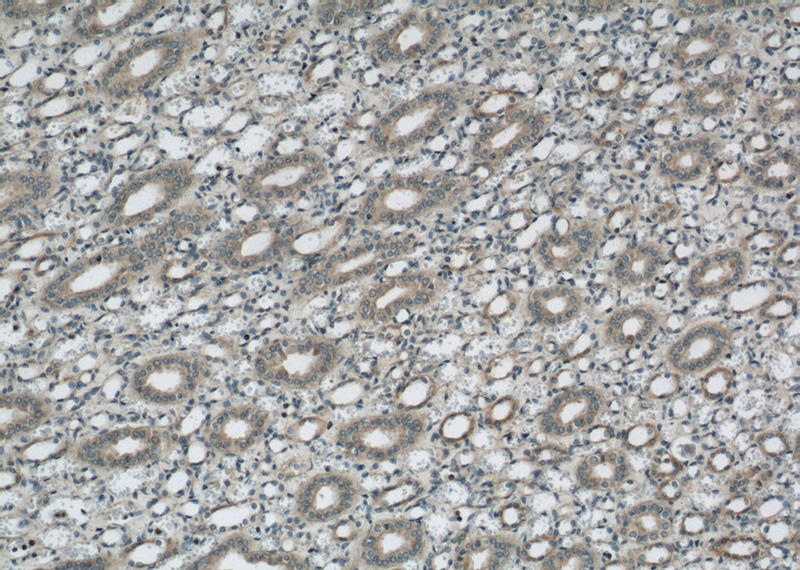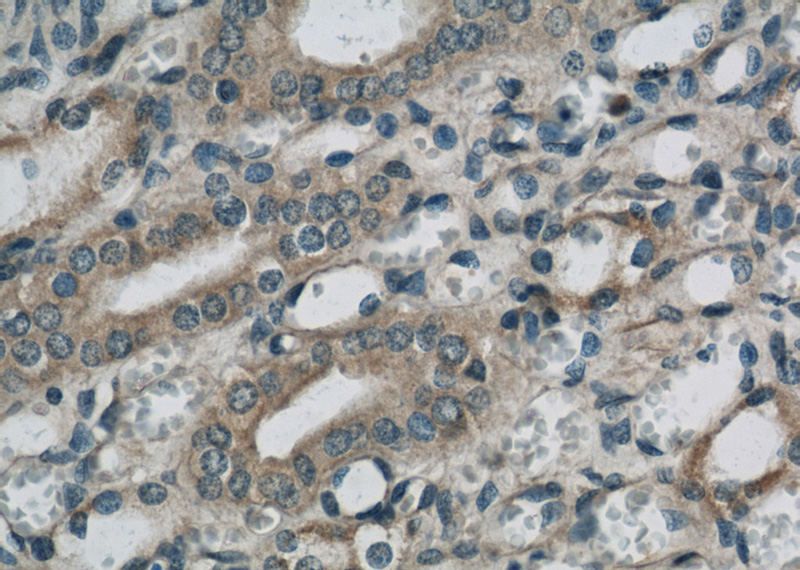-
Product Name
SARA antibody
- Documents
-
Description
SARA Rabbit Polyclonal antibody. Positive IHC detected in human kidney tissue. Positive WB detected in mouse brain tissue, HeLa cells, human brain tissue, MCF7 cells. Positive IP detected in mouse brain tissue. Observed molecular weight by Western-blot: 156 kDa
-
Tested applications
ELISA, WB, IHC, IP
-
Species reactivity
Human,Mouse,Rat; other species not tested.
-
Alternative names
hSARA antibody; Madh interacting protein antibody; MADHIP antibody; Novel serine protease antibody; NSP antibody; Receptor activation anchor antibody; SARA antibody; SMADIP antibody; ZFYVE9 antibody
-
Isotype
Rabbit IgG
-
Preparation
This antibody was obtained by immunization of SARA recombinant protein (Accession Number: XM_011542437). Purification method: Antigen affinity purified.
-
Clonality
Polyclonal
-
Formulation
PBS with 0.02% sodium azide and 50% glycerol pH 7.3.
-
Storage instructions
Store at -20℃. DO NOT ALIQUOT
-
Applications
Recommended Dilution:
WB: 1:500-1:5000
IP: 1:500-1:5000
IHC: 1:20-1:200
-
Validations

mouse brain tissue were subjected to SDS PAGE followed by western blot with Catalog No:115069(ZFYVE9 antibody) at dilution of 1:1000

Immunohistochemical of paraffin-embedded human kidney using Catalog No:115069(ZFYVE9 antibody) at dilution of 1:50 (under 10x lens)

Immunohistochemical of paraffin-embedded human kidney using Catalog No:115069(ZFYVE9 antibody) at dilution of 1:50 (under 40x lens)

IP Result of anti-ZFYVE9 (IP:Catalog No:115069, 5ug; Detection:Catalog No:115069 1:1000) with mouse brain tissue lysate 5000ug.
-
Background
ZFYVE9, also known as SARA (Smad anchor for receptor activation), is a double zinc finger (FYVE domain) protein that interacts directly with SMAD2 and SMAD3, and is involved in Alzheimer's disease. SARA functions to recruit SMAD2/SMAD3 to intracellular membranes and to the TGF-beta receptor. SARA plays a significant role in TGF-mediated signaling by regulating the subcellular location of SMAD2 and SMAD3 and modulating the transcriptional activity of the SMAD3/SMAD4 complex. SARA is possibly associated with TGF-beta receptor internalization.
Related Products / Services
Please note: All products are "FOR RESEARCH USE ONLY AND ARE NOT INTENDED FOR DIAGNOSTIC OR THERAPEUTIC USE"
